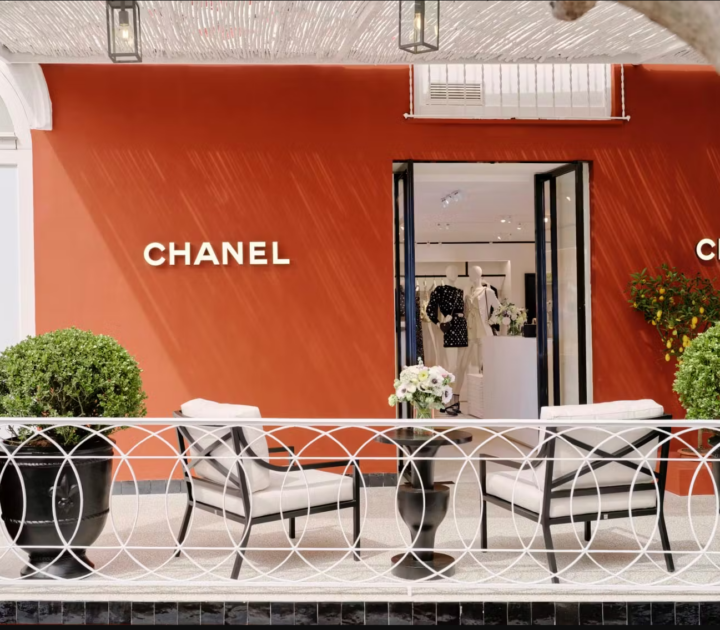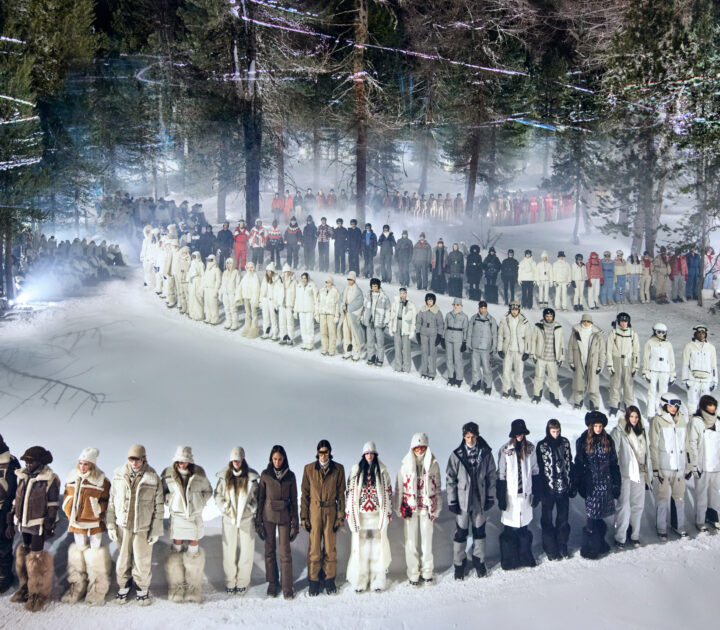
How to thrive on the experiential luxury trend
In business, no one is immune to disruption. For the very wealthy, however, this isn’t always a bad thing. In the January 2019 issue of Harvard Business Review, Roger Martin, the director of the Martin Prosperity Institute, makes a remarkable analysis of how digital disruption and globalization make the wealthiest individuals and companies even stronger.
There’s opportunity here, then, for the luxury industry. The stocks of LVMH and Kering have performed better than average over the past six months. However, the S&P Global Luxury Index is down 12% over that same time, suggesting business isn’t easy for everyone in this sector. This might suggest that wealthy people with more money to spend are expecting even more from their beloved brands – and not all brands are keeping up.
So how can luxury goods firms ride the wave of disruption and keep up with their wealthy clients? According to the management consultancy Bain, luxury hospitality, fine wines and fine food have been growing faster than personal luxury goods for a while. This indicates that luxury experiences are stealing a march on luxury products. So, the question for luxury goods companies is in fact: what does experiential luxury mean in our context?
Here at IMD we recently ran a Reinventing Luxury: Strategic Conversations program. It was a great opportunity to gather insights from luxury senior executives, and in doing so I found a few trends and ideas for luxury brands looking to increase their experiential offerings.
The main thing to note is that experience is better thought of as a portfolio where digital can play a role – albeit not exclusively – and the luxury product itself still matters. It’s also important to remember that there’s a difference between experiences and transformational experiences. The latter are growing in importance since luxury consumers increasingly expect to learn, make meaningful connections, and see their lives and themselves differently.
Here are a few steps to follow when thinking about what experiences your luxury brand can offer:
1. Start with what you know best: your products
The first degree of experience comes with product innovation. Luxury products create daily pleasure and enjoyment, not a one-off memory. Here you can play on the magnitude of experience. Rolls-Royce launched a Phantom gallery where customers can integrate their piece of art into the dashboard: that enhances their daily pleasure. But if you want to be more transformational, why not use the internet of things? For instance, if you are a watch or accessories brand, you can use Biowatch (a Swiss start-up that has developed a world-leading vein-reading technology) to create an experience where your customers can pay for things in shops, unlock their car and open their office, all with one product. By transforming your consumers’ interactions with their environment, you’re creating an even stronger daily experience through your existing products.
2. Spot new opportunities around your consumer journey
This stage consists of continuing your transformation from consumer awareness to consumer centricity. These experiences go beyond the product itself. Rolls-Royce has created a transformational experience at the ordering stage of the journey. Consumers can come to the company’s Atelier in Goodwood, England, to be presented with an impressive choice of exterior, interior, seat covering, and embroidery finishing options. Through this process, one consumer created the Model 08, a unique car that he has been showcasing with Rolls-Royce all over the world. In this sense, the customer did not buy a car, he bought an experience. And it doesn’t stop there. Even after customers have bought their car, they can come back and socialize with Rolls-Royce professionals in the Rolls-Royce Study.
3. Innovate with your business model
This is the most radical innovation path. LVMH’s recent purchase of Belmond, the owner of the Orient-Express and Hotel Cipriani, marks a clear inflexion of the conglomerate’s strategy: the addition of hospitality experiences to products and retail (a trend Bulgari pioneered a while ago). Clearly, it is a new value proposition. However, is this a shift towards transformational experience too? It might be.
Compare this with the latest innovation at Rolls-Royce again. Rolls-Royce Whispers is a new app that allows customers (all high net-worth individuals) to access a unique set of rare life-style experiences and to link socially through the platform. This is transformational for at least two reasons. One, the curated content of the app is not about conventional luxury tourism. It’s about once-in-a-life opportunities that include, for example, scientific exploration and camping in the Antarctic. Two, the platform functions as a club: it creates meaningful social connections between the members who can connect with one another directly, something that was much harder to accomplish before.
How do you make it work?
Once you know what your experiential innovations could look like, it’s time to give them life. Here are three suggestions for how you might do that:
1. Involve customers
To create its social platform, a whole team at Rolls-Royce worked in an agile way, under tight deadlines and asking feedback from customers to iterate the prototype until the launch of the final app. It also helped it to engage with a completely new range of potential customers.
2. Reinvent your store employee journey
Brands are starting to feed their retail staff with customer data and analytics over tablets: when a customer enters a store, he or she is detected via sensors linked to an internal analytics app. This approach is in its infancy and isn’t without risks: if employees spend more time making sense of the data they might stop focusing on the human interaction which is so central to the luxury in-store experience. Thus, making sure that staff can instantly and simply use the data will be where the holy grail is. Besides, continuing to invest in the quality of your staff, paying them more so that you attract the more educated talent, and seeing them as an investment rather than a cost is critical. But it’s going to require a substantial mindset change.
3. Monitor incessantly
You need to know how customers live their experiences at every touchpoint of their journey. Clinique La Prairie is a master at this: they use net promoter scores to measure each customer’s satisfaction at every touchpoint of his or her stay. Employees can start taking instantaneous actions to improve the service based on the feedback personally collected. Here, nothing is digital: personal interaction is key.
The bottom line is that innovating in the way you provide experiences requires a holistic approach. Some of these innovations are not necessarily ground-breaking. They begin by making things you already do more creative and customer-attentive. Others will require new ways of creating value, working and collaborating within and outside your firm.
Dr Stéphane J.G. Girod is professor of Strategy at IMD, where he directs the Reinventing Luxury: Strategic Conversations program and co-directs the Digital Execution program
This article was originally published by Luxury Society
Research Information & Knowledge Hub for additional information on IMD publications
The payment processing industry in Europe had operated in largely the same way for decades. A standard system of financial processing and clearing ...
Few Business to Business (B2B) marketplaces have succeeded. Metalshub has successfully combined a software platform as a service, with a marketplac...

Companies that modularize and externalize their best capabilities are in a strong position to seize unexpected opportunities. Prediction is hard. T...
In this note, I offer a framework to help business leaders cope with the duality of geopolitical conflict and stakeholder scrutiny. CEOs increasing...
With organizations of all sorts facing increased urgency and unpredictability, being able to ask smart questions has become key. But unlike lawyers...
No company can grasp the potential of AI until it has set up a data-driven culture enabling employees to create value from the insights that emerge...

Venezuela is engulfed in a political and economic crisis, which has forced over 6 million people – some 20% of the population – to flee the country...

Since the start of the Ukraine war, the US, EU, UK and other countries including Japan and Canada have increased sanctions on Russia. By late 2023,...
Research Information & Knowledge Hub for additional information on IMD publications
Research Information & Knowledge Hub for additional information on IMD publications
Case reference: IMD-7-2457 ©2024
Research Information & Knowledge Hub for additional information on IMD publications
in MIT Sloan Management Review Summer 2024, vol. 65, no. 4
Research Information & Knowledge Hub for additional information on IMD publications
Research Information & Knowledge Hub for additional information on IMD publications
in Harvard Business Review May-June 2024, vol. 102, issue 3, pp. 66-74
Research Information & Knowledge Hub for additional information on IMD publications
Research Information & Knowledge Hub for additional information on IMD publications
Research Information & Knowledge Hub for additional information on IMD publications
in The Conversation 11 March 2024
Research Information & Knowledge Hub for additional information on IMD publications
in The Conversation 4 March 2024
Research Information & Knowledge Hub for additional information on IMD publications

